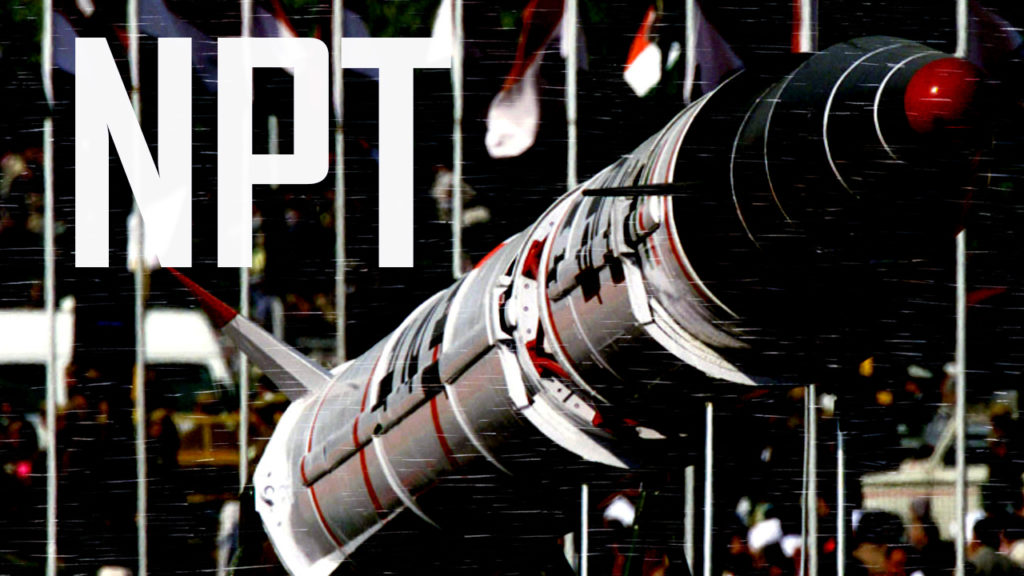Geopolitical confrontations and aspiration for energy security stimulate concerned states to develop their nuclear programs. It is logical that competing states, alongside the development of peaceful nuclear technologies, are working to gain access to nuclear weapons technologies or to expand existing nuclear capabilities. The only multilateral international instrument for controlling non-proliferation of nuclear weapons is the NPT (Nuclear Nonproliferation Treaty), with the IAEA (International Atomic Energy Agency) as the authorized body for the implementation of the NPT. Also significant is the fact that the NPT does not impose any restrictions on non-nuclear states in terms of uranium enrichment or the development of other stages of the nuclear fuel cycle. Furthermore, the NPT has a number of general wording articles.
On January 17, The National Interest published an article titled “The Little-Known Loophole in the Nuclear Nonproliferation Treaty”. The article describes the terms of the Nuclear Nonproliferation Treaty (NPT) that could negatively affect the current regime of nonproliferation of nuclear materials and weapons. It also addresses the position of the United States towards nonproliferation questions and the behavior of the United States on the international scene. The article’s authors, Victor Gilinsky and Henry Sokolski, note US diplomatic actions towards states that want to withdraw from the treaty and the situation with continuing IAEA inspections if an NPT member state withdraws from the treaty.
SouthFront wants to provide an in-depth look at the situation covered in The National Interest’s general wording article. The NPT is a multilateral international arrangement. Nonetheless, it entails signing of additional special agreements in the framework of the Article III of the NPT. A similar point is included in the INFCIRC/153 by the IAEA. The IAEA itself has no levers of pressure to punish states that violate the NPT, the INFCIRC/153, and other agreements. If these agreements are violated, the IAEA sends a notification of this situation to the UN Security Council.
The NPT includes no description of the withdrawal procedure for states that want to leave the treaty. This is not a result of a mistake during the treaty preparation, but rather a reference to the accepted rules of international law, in particular the Vienna Convention on Diplomatic Relations (1961). Under international law, any state has a right to reject an international treaty if it goes contrary to its national interests. However, this situation is not so simple. The NPT is among the key treaties forming the international defense system. The importance of the treaty for the UN, especially for “Nuclear Club” states, is comparable to the Charter of the United Nations. The NPT is a special multilateral agreement; any state that withdraws from the treaty violates key security aspects of all other NPT member states. This is why the United States recalls core principles of international law, when it talks about the need for additional tools of cooperation with states that want to leave the NPT or violate it.
For example, the North Korea case described in UN Security Council Resolution 1718 (2006) emphasizes that North Korea received special technical cooperation during the period when the country was an NPT member state. This allowed North Korea to boost its nuclear technologies.
The US as the leading nuclear state pursues two main goals:
- To keep its status as the leading nuclear state
- To limit other states’ ability to obtain any nuclear technologies
For these purposes, in 1995, the US pushed forward the additional special agreement (INFCIRC/540) within the framework of the NPT regime. This agreement includes the signing of additional protocols between NPT member states and the IAEA. These protocols were signed on the basis of good will. They expand the obligations taken by NPT member states. For example, this includes:
- Informing the IAEA about nuclear research activities
- Providing the IAEA with a detailed description of the sites where the studies are carried out (a complete location of the research centers with a detailed explanation of what is being done in what building and by whom)
- Providing the IAEA with comprehensive information on the volume of uranium mining
By seeking to limit the access of other states to nuclear technologies, including peaceful ones, the US leadership employs double standards.
The US side, which is well known for its high legal literacy, allows itself to impermissibly manipulate wording and well-known facts. In any agreements signed within the framework of the NPT, there are no provisions that limit countries in the development of peaceful nuclear technologies. US diplomatic actions in the field are mainly aimed at its rivals and competitors, while the actions of US “traditional allies” remain unaddressed. Additionally, it should be noted that the nonproliferation regime is being violated by NPT member states, including members of the Nuclear Club, rather than by “problematic powers”. In late 2019, reports appeared that some European states had illegally obtained a large number of weapons-grade uranium for own “experiments”. According to experts, it is likely that the US, France, or the UK was the state that provided the aforementioned weapons-grade uranium. These reports have not been confirmed officially so far. However, they are widely discussed in EU academic circles.






